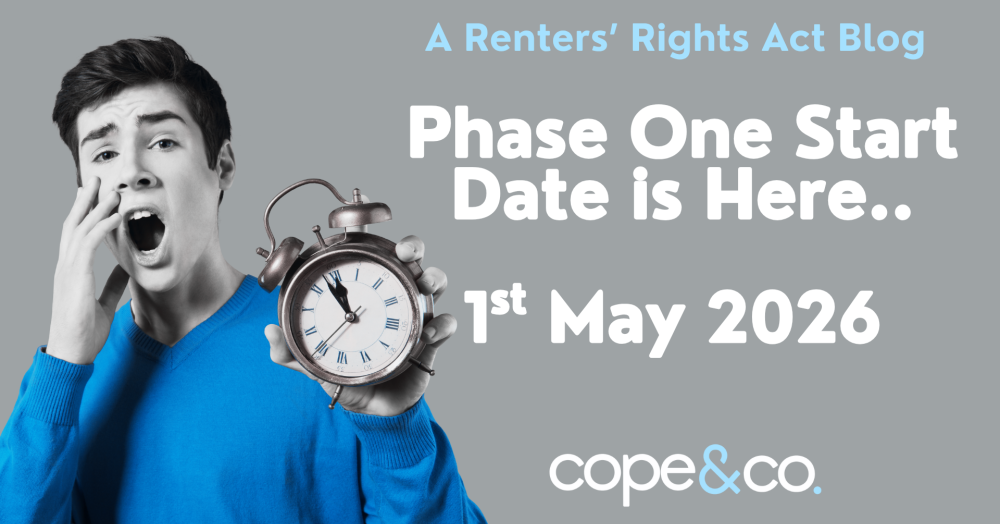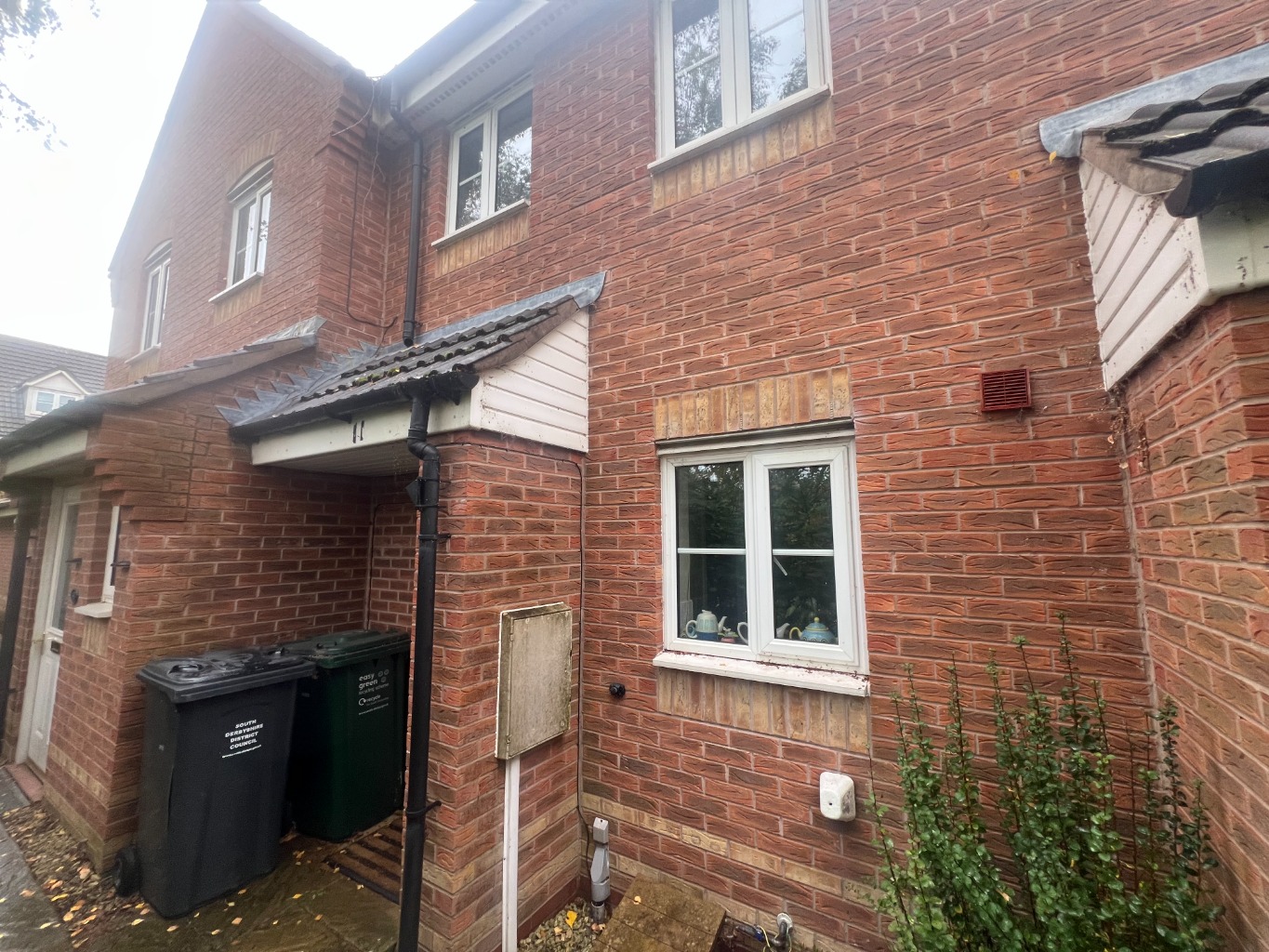
Landlord Update: The Renters’ Rights Act – What 1st May 2026 Really Means for You
At the time of writing, there are just 168 days until the Renters’ Rights Act begins it's Phase 1 implementation on 1st May 2026. With Section 21 ending, fixed terms disappearing and new compliance rules ahead, its time to get ready. Here’s what the countdown means and how Cope & Co. will help you stay ready and resilient.
The Government has now confirmed that the first major changes under the Renters’ Rights Act will begin on 1st May 2026.
For landlords, this marks the biggest shift in lettings legislation for nearly four decades. With fixed terms disappearing, Section 21 being abolished, and new compliance demands around the corner, it’s crucial to understand what’s coming and how to get ahead of it.
That means giving landlords clear, calm guidance, without the noise, panic, or politics. This update breaks down what changes on day one, what still lies ahead, and the practical steps you can take now to protect your portfolio.

What Will Change on 1st May 2026?
Not everything launches at once, but the first phase introduces several headline reforms:
1. The Abolition of Section 21 ("No-Fault Eviction")
This is the biggest shift. From 1st May, Section 21 will no longer exist. You’ll still be able to issue Section 21 notices before this date, but court applications for possession must be made by 31st July 2026, or the notice becomes invalid.
After that, all repossessions will rely on Section 8 grounds, meaning evidence-based processes will become the norm.
2. End of Fixed-Term Tenancies
Most new tenancies will become periodic by default, with rolling terms rather than set periods. This increases tenant mobility, so rental pricing and risk management will become even more important.
3. Limits on Rent in Advance & Rent Increases
No more than one rent increase per year
Restrictions on asking for large sums of rent in advance
No rental bidding wars over and above the advertised rent
4. Fair Access Rules
It becomes illegal to discriminate against prospective tenants based on benefit status or children/family status
5. New Penalties
Expect significantly tougher fines. From £7,000 to £40,000 for breaches. Local authorities overseeing enforcement

What Do Landlords and Agents Need To Do on 1st May?
Provide an Official Information Leaflet
Every existing tenant will need to be issued with a Government-approved information sheet within one month of commencement. This explains their rights and your new obligations.
⚠️ Important: You do NOT need to issue a brand-new tenancy agreement for existing tenants.
Switch to Periodic Assured Tenancies
Any new tenancy starting after 1st May 2026 must use the new periodic assured tenancy format. We’re awaiting the Government’s final guidance on exactly what these documents must include.

Immediate Actions for Landlords
To stay compliant and protect long-term profitability, we recommend reviewing:
✔ Portfolio Health
Check your rental levels, especially as periodic tenancies may increase turnover risk.
✔ Property Condition
Inspect for hazards and overdue maintenance—new standards will tighten further in later phases.
✔ Tenant Processes
Update referencing checks, marketing wording, and systems for logging repairs and complaints.
✔ Your Agent’s Preparedness
If Cope & Co. manages your property, rest assured—we’re already preparing for the changes.
If not, ask your agent how ready they really are.
✔ Training & Knowledge
This Act is extensive. A solid grasp now prevents costly mistakes later.

What Happens After 1st May?
The Act will be introduced in three phases. Phase One we have already discussed above.
Phase Two – Late 2026
These major structural reforms will roll out:
• The Private Landlord Ombudsman
A mandatory, independent dispute-resolution service.
• The PRS Landlord & Property Database
Every landlord and every rental property must be registered.
Rollout will be staggered throughout late 2026.

Phase Three – No Date Confirmed
These require public consultation, so timescales are still unknown:
• New Decent Homes Standard for the PRS
Including an updated Housing Health & Safety Rating System (HHSRS).
• Awaab’s Law for the Private Sector
Stricter requirements and timescales for resolving damp, mould, and similar hazards.
These will have major compliance implications, especially for older properties.

How Cope & Co. Will Support You
This legislation transforms the landscape of letting property in England, and navigating it alone would be overwhelming. At Cope & Co., we’re committed to giving our landlords everything they need to stay compliant, confident, and ahead of the curve.
Here’s how we’ll help:
✅ Updated tenancy agreements (released the moment the Government publishes the required content)
✅ Compliance guidance tailored to Derby landlords
✅ Portfolio reviews to assess risk under periodic tenancy rules
✅ Rent reviews aligned with future turnover risk
✅ Property inspection and hazard assessments
✅ Update sessions throughout 2026
Whether you manage one rental or a large portfolio, you won’t need to face these changes alone. Our team is already preparing the tools, templates, and processes you’ll need.

LetSimple: The Smarter, Safer Way to Let in a Post–Renters’ Rights Act World
With just months until the Renters’ Rights Act comes into force, we are entering a brand-new landscape and compliance is about to play a much bigger role in day-to-day management.
For many landlords, this raises an unavoidable question:
“How do I stay protected, profitable, and compliant without letting legislation take over my life?”
That’s exactly why we built LetSimple.
LetSimple is Cope & Co.’s streamlined, stress-free landlord service designed for the new era of lettings. Blending protection, compliance, communication and complete support, it helps landlords stay confidently ahead while the sector undergoes its biggest transformation in 40 years.
If you want to protect your income, streamline your obligations and stay ahead of every new rule, LetSimple is the simplest and safest way to navigate the Renters’ Rights Act era.












